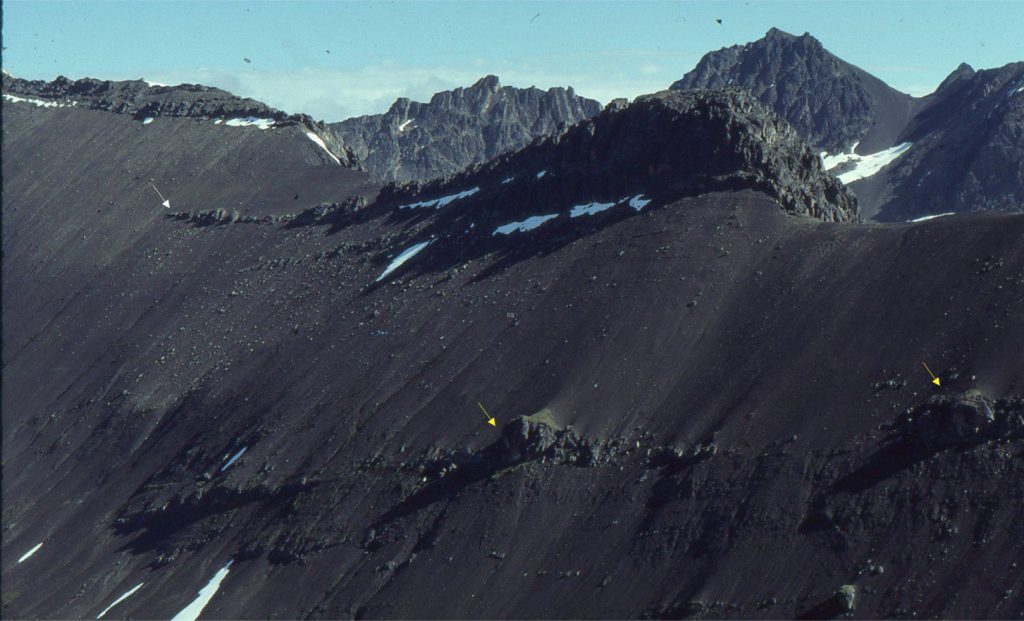
A post on debris flows, mud flows, hyperconcentrated flows, mud torrents, gravel flows slurry flows, lahars.
General considerations – the rheological spectrum
The expression debris flow is the general name given to flows of solid framework debris supported by a viscous fluid. Geological debris is mostly rock and wood, but modern flows frequently contain old tyres, vehicles and any other jetsam strewn through a water course. Viscosity is developed primarily from mud suspensions in water (clay plus silt) and can vary from highly fluid to goopy. The spectrum of viscosities gives rise to different mechanical behaviours where low viscosity flows tend to be highly mobile and fast moving, and viscous flows more sluggish. Note however that these references to flow speed are relative – all debris flows move pretty quickly. Debris flows are one of natures more violent geological processes.
Viscous fluids have innate strength, called the yield strength where the fluid will not deform or flow below a critical stress (flow is a manifestation of deformation). Fluids (or solids) that behave in this manner are plastic, or hydroplastic. Yield strength depends on viscosity. Thus, the viscosity decreases at strain values beyond the yield strength. If stress is proportional to strain beyond the yield strength (the ideal case) then the material is a Bingham plastic. The relationship between shear stress and shear strain (deformation) is shown in the diagram below.
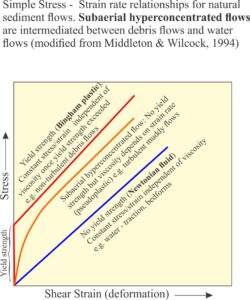
Evolution of flows
The names mud flow, hyperconcentrated flow, mud torrent, gravel flow, slurry flow, and lahar are often used synonymously with debris flow. However, each of these represents a distinct set of compositional and rheological properties of the muddy fluid and solid framework. The spectrum of flow types ranges from highly fluid mud-matrix dominated, to flows where the granular component dominates. One type of flow can also evolve to a flow having different mechanical and rheological properties, for example where granular debris is deposited such that the fluid becomes the dominant component, or in subaqueous flows where water is ingested through the flow head resulting in matrix dilution. Lahars are a case in point.
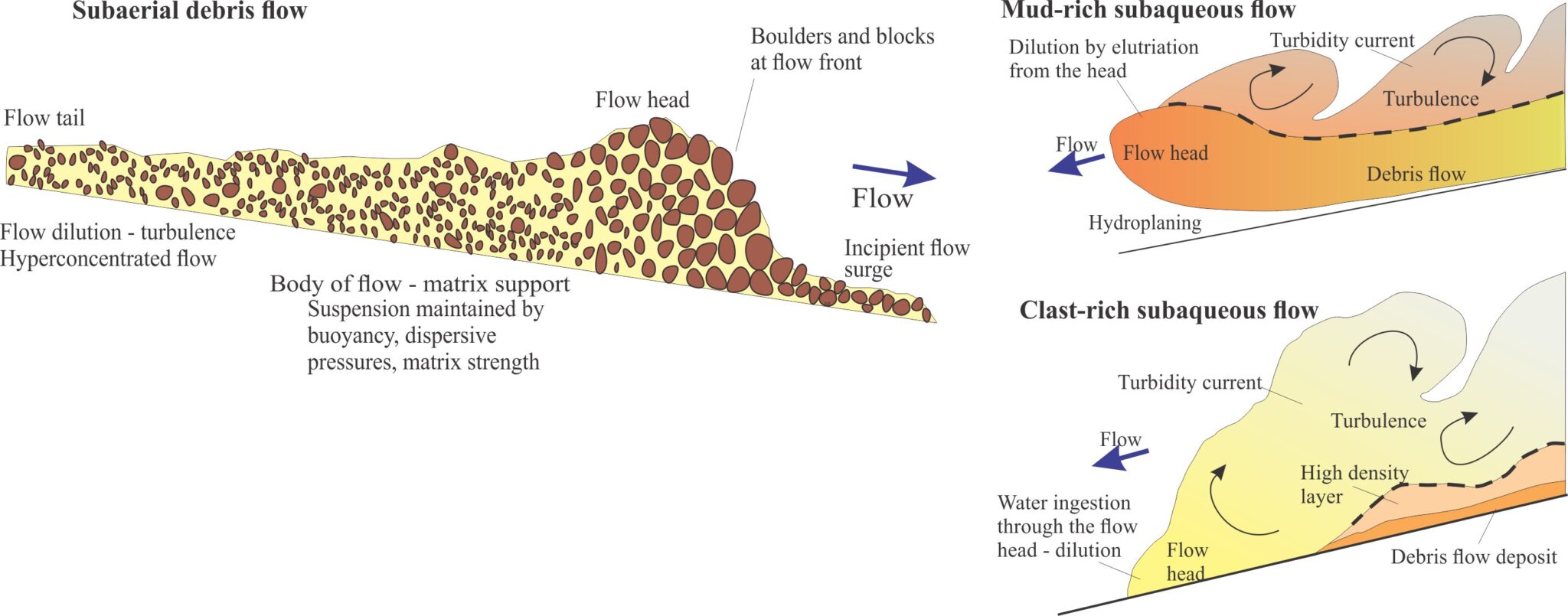
Lahars are terrestrial sediment gravity flows where the granular material consists of volcanic debris. They begin life as mobile, gravelly debris flows following major precipitation events, rapid melting of ice, or breaches of crater lakes or ponded water. The steep volcano slopes on which they form, plus their rheology ensure some of the longest flow-runout distances known – the 1877 event on Cotopaxi produced a lahar that traveled 325 km. Lahars are known to transform to hyperconcentrated flows when the deposition of coarse material leaves a mud-charged but highly mobile fluid phase (Mothes and Vallance, 2015, PDF available). For example, an eruption at Mt St. Helens in 1982 breached a lake, the sudden release of water producing a debris flow that transformed to a turbulent, hyperconcentrated flow after travelling 27 km from its source. Pierson and Scott (1985, PDF available) estimate that, at the point of flow transformation, the sediment concentration in the lahar was reduced to 57% (volume) because of dilution.
Flow units and surges
Flow unit is used to describe a single sediment gravity flow event preserved in a single bed.
However, the term becomes ambiguous for flows that develop multiple surges, a common feature of highly mobile flows – in this case should each surge be considered a ‘flow unit’ or ‘sub-unit’? Semantics aside, it is important to recognize this phenomenon in the rock record. Criteria to consider are:
- The deposits of successive surges should have well-defined boundaries that represent the contact between the cessation of deposition in one surge and the beginning of the next surge. However, these boundaries may be diffuse if there is no grain size partitioning within or between surge units.
- Fluid-sediment shear along depositional boundaries may generate clast alignment.
- What is the nature of the upper and lower contacts of the main flow unit (that contains several surge subunits)? Can they be distinguished from internal surge boundaries? This problem is simplified if the underlying and overlying deposits are fundamentally different, such as hemipelagic mudrocks or turbidites in subaqueous environments, or paleosols and other evidence of subaerial exposure in terrestrial debris flows?
- Is there a grain-size trend between successive surge subunits that would indicate the gradual loss of coarse size fractions as the flow evolves?
Here are a couple of links to videos of recent debris flows (from Dave Petley’s blog at AGU).
A very fluid, muddy, blocky mud flow on 29th May 2017, Illgraben, Switzerland.
Time lapse of a surging flow, San Bernardino Mountains Sept 12, 2022, after significant rainfall.
Debris flow lithofacies
We can tease four types of flow and their resulting lithofacies from this broad spectrum. Note however that there are variations in flow behaviour and deposit between these basic types.
Hyperconcentrated flows
This category has the lowest matrix viscosity and therefore negligible yield strengths. They are highly fluid mixtures of gravel (usually finer grades), sand, mud and water that behave more like Newtonian fluids where clast support is maintained by turbulence. Flow velocities can be high enough (supercritical) to generate standing waves and antidune bedforms.
Lithofacies
Compared to many other debris flow types, deposits from hyperconcentrated flows are relatively thin – centimetres to decimetres. This is partly due to the ‘watery’ nature of the flows, where fluid drains rapidly once the coarser fraction has come to rest.
Normal grain size grading is common – a product of sediment fallout from turbulent suspensions. Turbulence is also possible in some mobile debris flows, but it is usually subordinate to the effects of matrix strength and dispersive pressures, the latter producing reverse size grading – reverse grading is a useful criterion to distinguish hyperconcentrated flows from other debris flows.
Alignment of clasts is also possible, an indication of shear along the depositional surface, but this fabric can occur in other debris flow types. Contacts at the base of flows may be scoured – another indication of turbulent flow.
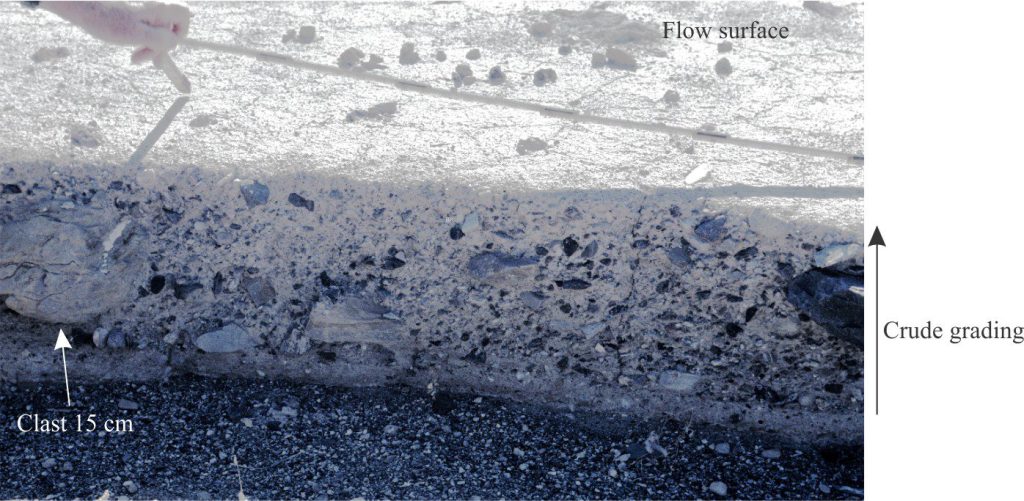
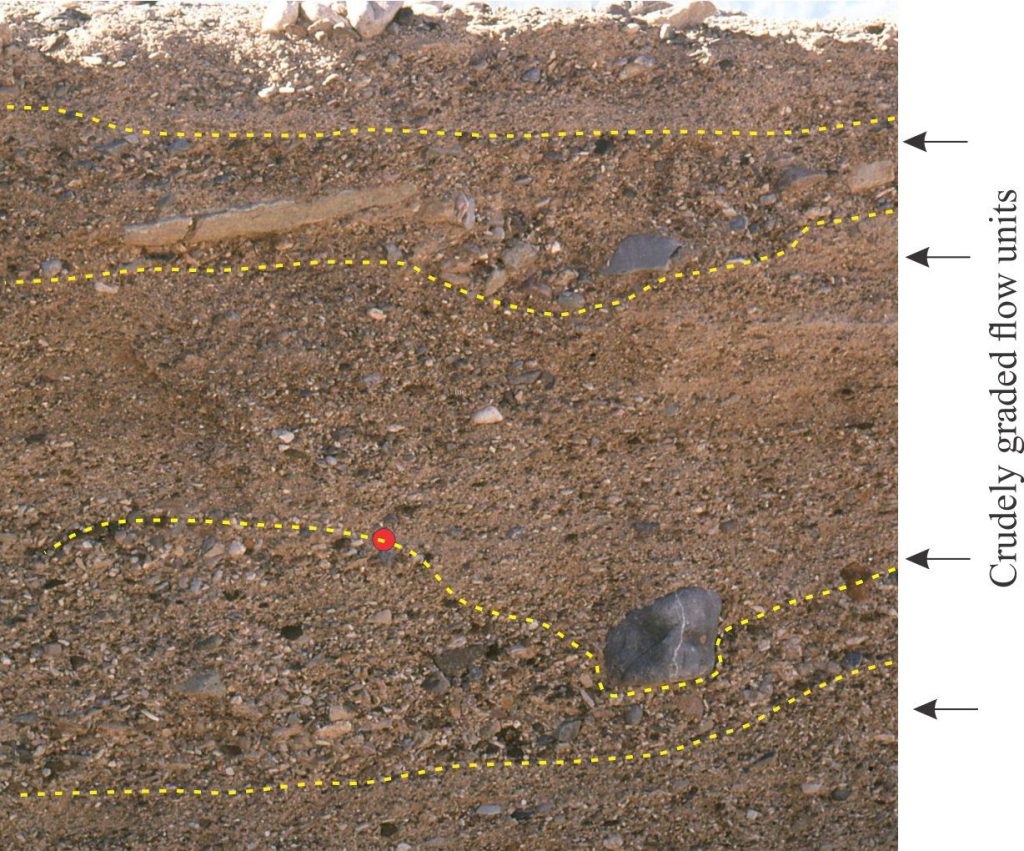
Mud flows
Fluid viscosity and yield strength will increase as the proportion of mud increases in the fluid phase. In mud flows the fluid phase is proportionally greater than the solid framework. Framework clasts are supported not by turbulence, but primarily by matrix strength and buoyancy. The more viscous state of mud flows enables them to carry large blocks over great distances (kilometres to 10s of kilometres), but at a relatively slower pace compared with hyperconcentrated flows (the word ‘slower’ is meant in a relative sense – mud flows can travel at 10s of km/hour). Dispersive pressures are less important because the low concentration of clasts means few collisions.
Lithofacies
The diagnostic textural feature of this flow type is the proportion of mud matrix in which framework clasts are fully supported; they are also called pebbly mudstone. Mud flow mechanics dictate that normal and reverse grain size grading are absent or poorly developed. Deposit thickness can extend to two metres or more although thicker units may be composite.
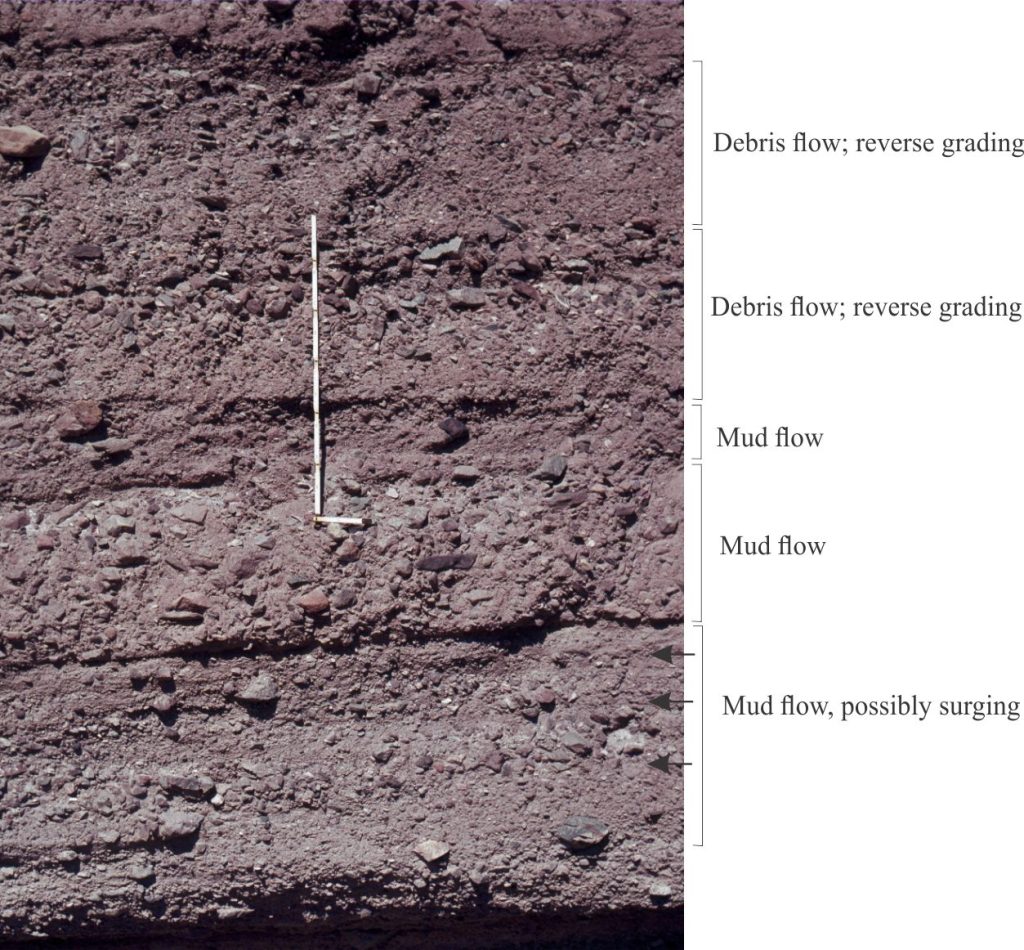
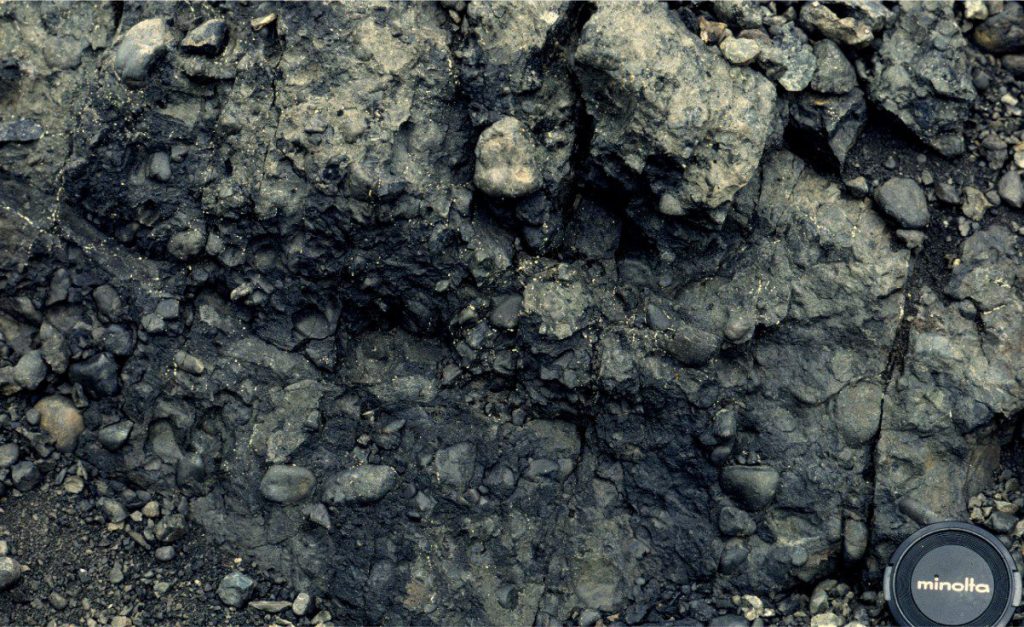
Matrix-supported debris flows
This type of debris flow is characterised by approximately equal proportions of framework clasts and matrix. Dispersive pressures generated by clast collisions are the primary flow support mechanism. Matrix strength and buoyancy play a more subordinate role. This type includes lahars. Debris flows stall en masse rather than by gradual accretion across a depositional surface. In subaqueous environments, debris flows elutriate fine sediment to an overlying turbulent plume that can flow as a turbidity current far beyond the debris flow depositional limits.
Lithofacies
Clast size is highly variable, ranging from pebble to large blocks. Framework clasts are supported by matrix (there may be some clast-support), but unlike mud flows, the proportions of these two components are approximately the same. Reverse grading is common, a product of clast collisions, a textural characteristic that serves to distinguish these flows from hyperconcentrated flows and mud flows. Any clast alignment or crude stratification is generally confined to the flow base.
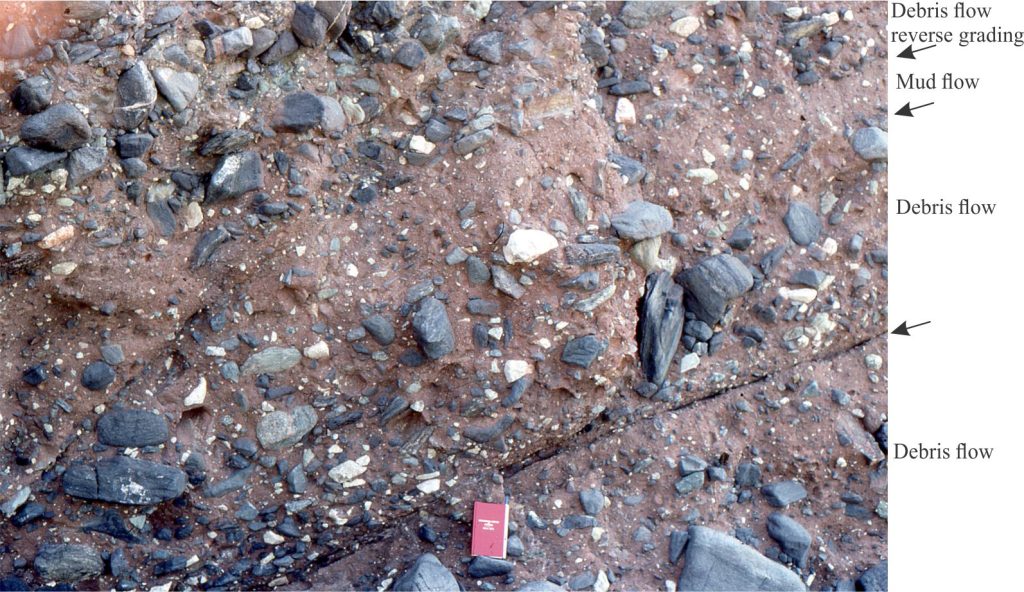
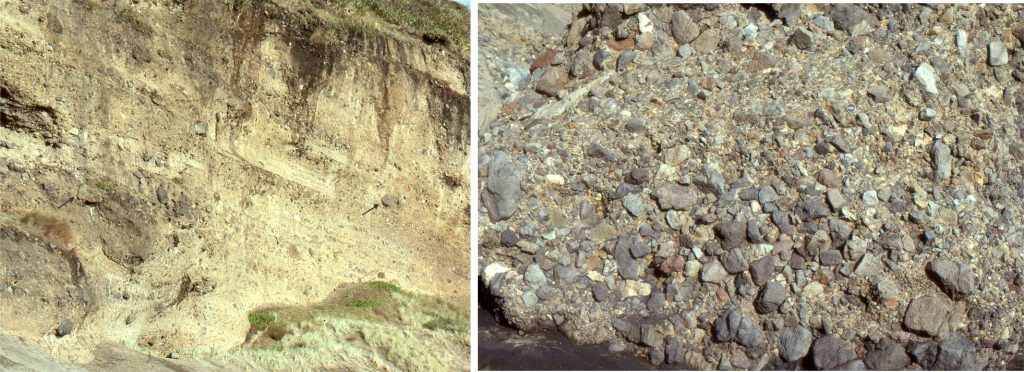
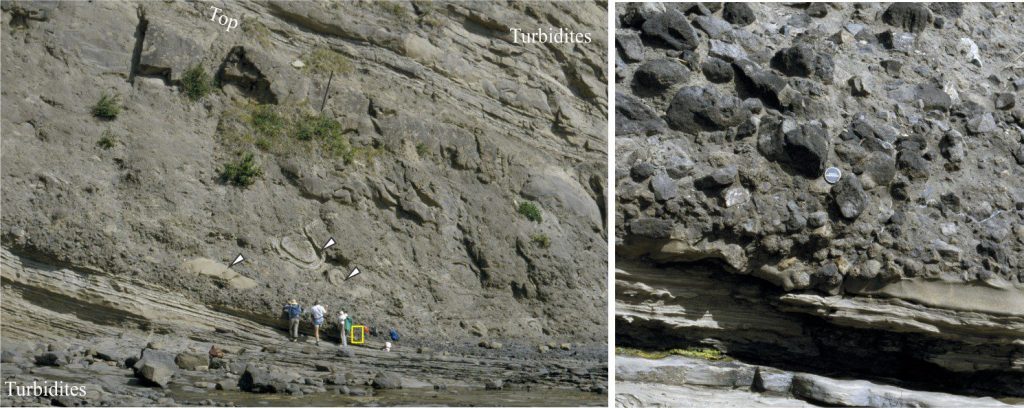
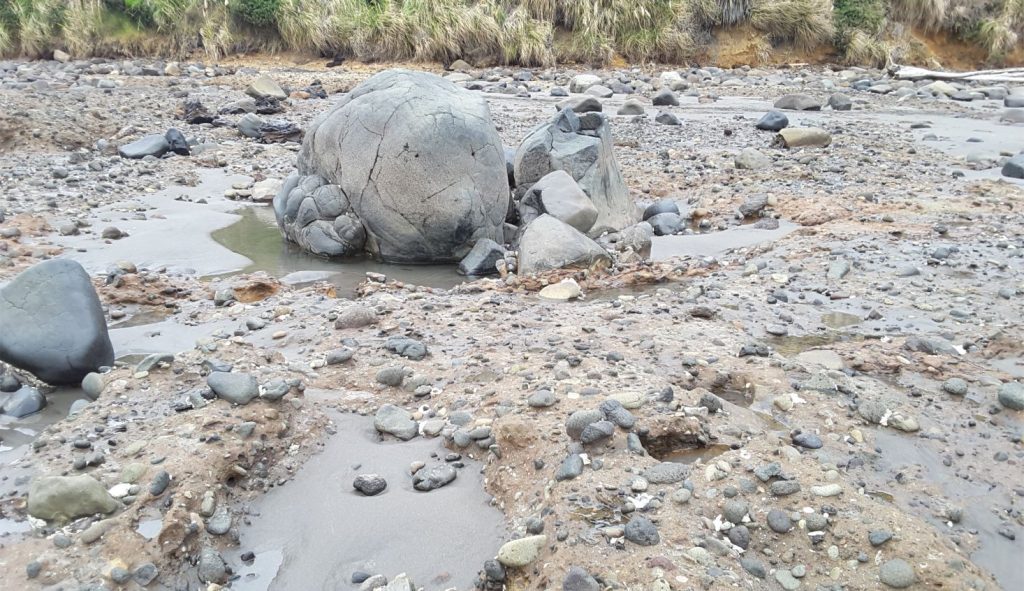
Clast-supported debris flows
The fluid phase is subordinate in these flow types and may act more as a lubricant than in a support capacity. Flow support is maintained primarily by dispersive pressures. Clast alignment and crude subparallel stratification is common, indicating significant shear across the depositional surface.
Lithofacies
Clast-supported frameworks and a paucity of matrix define the textural character of these flows. Reverse grading is common. Elongate clasts tend to be aligned parallel to bedding, and in some cases imbricated.
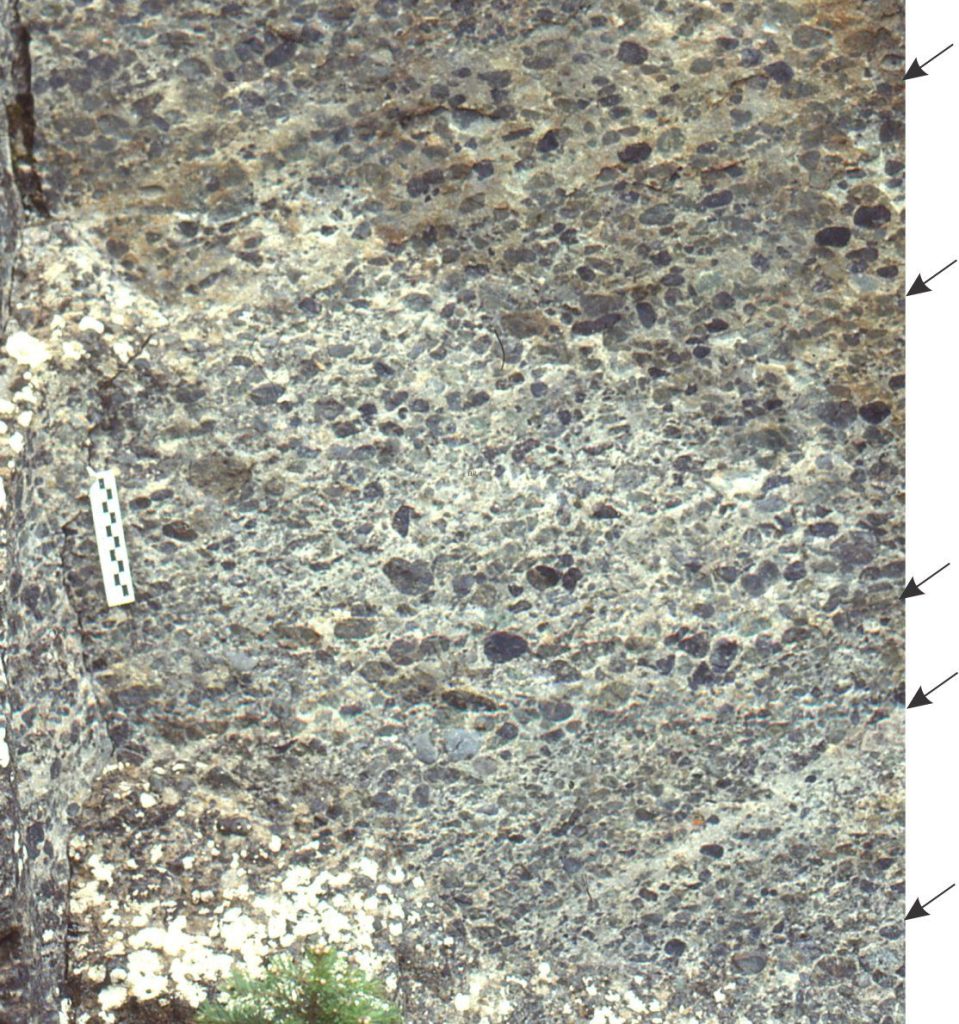
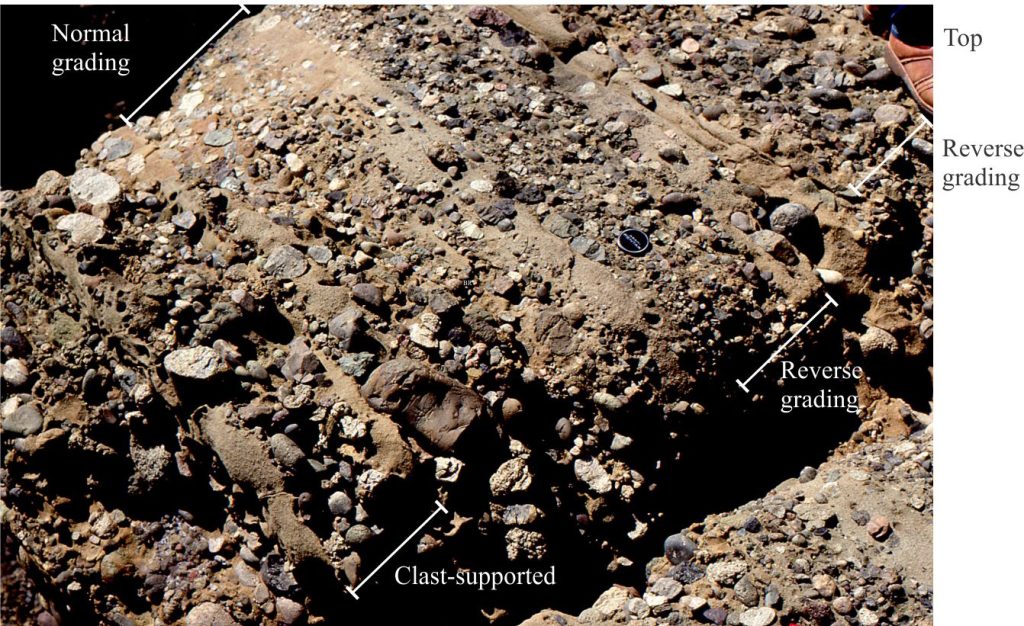
Common environments
Debris flows can potentially form anywhere there is loose, unconsolidated gravelly sediment, an initial sloping surface, and excess water to form a supporting muddy fluid. Common water sources are:
- Direct precipitation that saturates soils and raises watertables (the overall effect is reduced shear strength in the alluvial-colluvial deposits).
- Rapidly melting ice.
- Breached water bodies such as elevated lakes and volcanic crater lakes.
- Continuous and complete water saturation in submarine and lacustrine environments.
In terrestrial environments, debris flows form directly as lahars on volcanic edifices during and after eruptive episodes, as canyon- and steep hillside-fed floods to alluvial fans. They can also evolve from landslides. Initial slopes are usually several degrees at the point if initiation but can flatten at the limits of flow runout (kilometres to more than 300 km).
In submarine and lacustrine settings, slope failure and sediment gravity flow initiation can occur on slopes less than 1o. Debris flows (and other sediment gravity flows) are commonly generated from submarine landslides at fault margins, carbonate platform margins, oversteepened continental slopes, delta, and fan-delta slopes. They also develop on the margins of submarine gullies at the shelf-slope break, and submarine canyon walls. In most of these situations, debris flows will evolve to turbidity currents once the fluid phase is sufficiently diluted by deposition of clastic debris and ingestion of water at flow heads.
Other posts in this series
Sandstone lithofacies
Sedimentary lithofacies – An introduction
Ripple lithofacies: Ubiquitous bedforms
Ripple lithofacies influenced by tides
Tabular and trough crossbed lithofacies
Laminated sandstone lithofacies
Low-angle crossbedded sandstone
Hummocky and swaley cross-stratification
Lithofacies beyond supercritical antidunes
Subaqueous dunes influenced by tides
Gravel lithofacies
Introducing coarse-grained lithofacies
Crossbedded gravel lithofacies

















